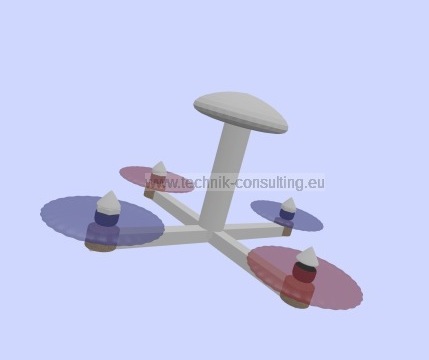How Can I Improve The Stability Of My Drone Shots?
Have you ever wondered how to make your drone shots smoother and more professional-looking? Whether you’re capturing epic landscapes or filming action-packed scenes, having stable footage is crucial. In this article, we’ll discuss various tips and techniques on how you can improve the stability of your drone shots. Let’s dive in and elevate your aerial photography and videography game!
Understanding the Importance of Stable Drone Shots
When it comes to capturing stunning footage with your drone, stability is key. Shaky and jittery footage can be distracting and take away from the overall impact of your visuals. A stable shot, on the other hand, can make your content look more polished, professional, and visually appealing. By improving the stability of your drone shots, you can elevate the quality of your work and impress your audience.
Why does stability matter in drone shots?
Stability matters in drone shots for several reasons. First and foremost, stable footage looks more appealing to the viewer’s eyes. It can help evoke emotions, immerse the audience in the scene, and create a sense of professionalism. Additionally, stable shots are easier to work with in post-production, allowing for smoother edits and transitions. Finally, stable footage is essential for certain types of shots, such as time-lapses or slow-motion sequences, where any camera movement can ruin the effect.
Tips for Improving Stability in Your Drone Shots
Now that you understand the importance of stability in drone shots, let’s explore some practical tips and techniques to help you achieve smoother and more professional-looking footage.
1. Choose the Right Drone
The first step in improving the stability of your drone shots is to ensure you are using the right equipment. Different drones come with varying levels of stability, depending on factors such as build quality, camera gimbal, and stabilization technology. Invest in a high-quality drone with a reliable stabilization system to ensure smoother footage.
2. Calibrate Your Drone
Before you take off, it’s essential to calibrate your drone to ensure optimal performance. Calibration helps the drone’s sensors and GPS system work accurately, which can improve stability during flight. Follow the manufacturer’s instructions on how to calibrate your drone properly, and perform this step regularly to maintain stability.
3. Check the Weather Conditions
Weather conditions play a significant role in the stability of your drone shots. Windy conditions can cause your drone to sway and affect the quality of your footage. Avoid flying in strong winds and turbulent weather, as this can lead to unstable shots. Choose clear, calm days for optimal stability and smoother flight.
4. Use Intelligent Flight Modes
Most modern drones come equipped with intelligent flight modes that can help improve stability and make it easier to capture smooth shots. Features such as ActiveTrack, Point of Interest, and Tripod Mode can assist you in getting stable footage without having to manually control the drone’s movements. Experiment with these modes to see which works best for your specific shot.
5. Slow Down Your Movements
One common mistake that drone pilots make is flying too fast, which can result in jerky and unstable footage. To improve stability, slow down your movements and maneuvers when capturing shots. Smooth, gradual movements will help you achieve a more cinematic look and reduce the chances of shaky footage.
6. Master Your Controls
Understanding how to control your drone effectively is essential for achieving stable shots. Practice flying in different modes, adjusting the gimbal tilt, and using the remote controller’s joysticks with precision. The more familiar you are with your drone’s controls, the better you can maintain stability and capture the shots you envision.
7. Use ND Filters
ND (Neutral Density) filters can be a game-changer when it comes to improving the stability of your drone shots. These filters reduce the amount of light entering the camera lens, allowing you to use slower shutter speeds without overexposing your footage. By using ND filters, you can achieve smoother motion blur in your shots, resulting in more stable and cinematic footage.
8. Pay Attention to Composition
Composition plays a vital role in the stability of your drone shots. By framing your shots carefully and following the rule of thirds, leading lines, and other composition techniques, you can create visually pleasing and stable footage. Pay attention to the elements in your frame, balance your composition, and consider the movement within the shot to enhance stability.
9. Monitor Your Battery Life
Low battery life can lead to abrupt and unstable flight behavior in drones. To ensure stability throughout your shoot, monitor your drone’s battery life and plan your shots accordingly. Be aware of how much flight time you have left and land the drone safely before the battery runs out. This will help avoid sudden drops in altitude or erratic movements due to low power.
10. Practice, Practice, Practice
Like any skill, improving the stability of your drone shots takes practice. Spend time honing your flying skills, experimenting with different settings and techniques, and analyzing your footage to see where you can make improvements. The more you practice, the more confident and competent you will become in capturing stable and professional-looking drone shots.
Conclusion
Achieving stable drone shots is a combination of using the right equipment, mastering your flying skills, and implementing various techniques to enhance stability. By following the tips and techniques outlined in this article, you can elevate the quality of your aerial photography and videography and impress your audience with smoother and more professional-looking footage. Remember, practice makes perfect, so don’t be afraid to experiment and refine your craft to achieve stunning drone shots. Happy flying!

